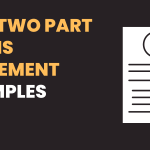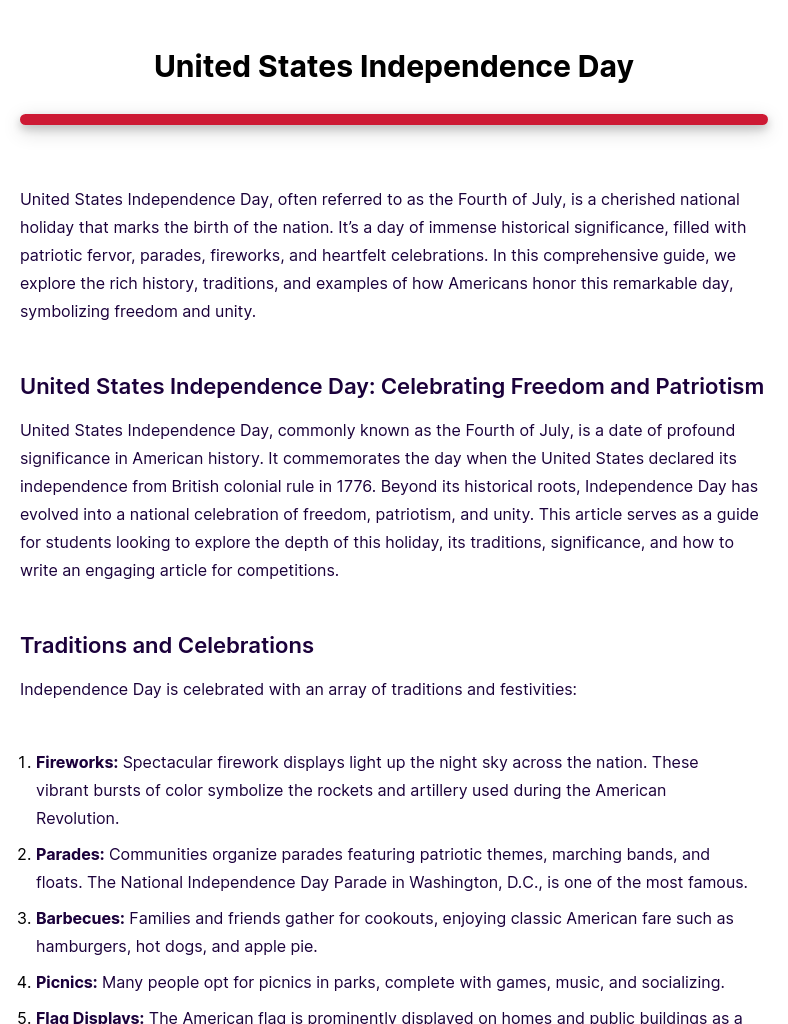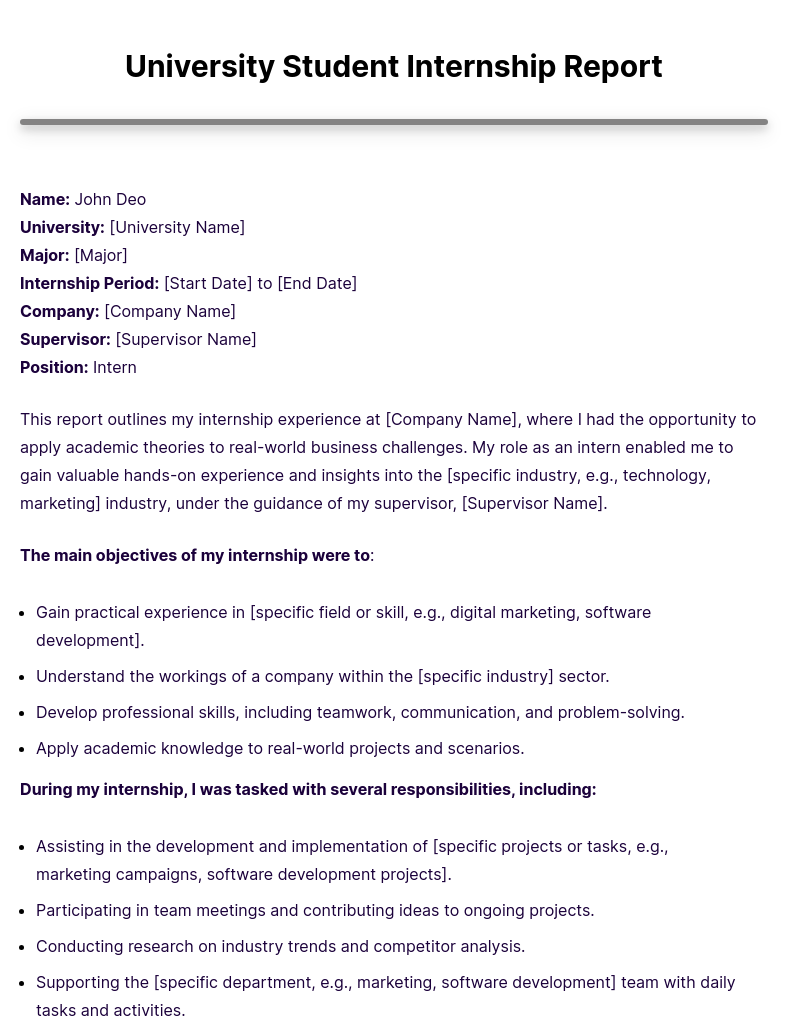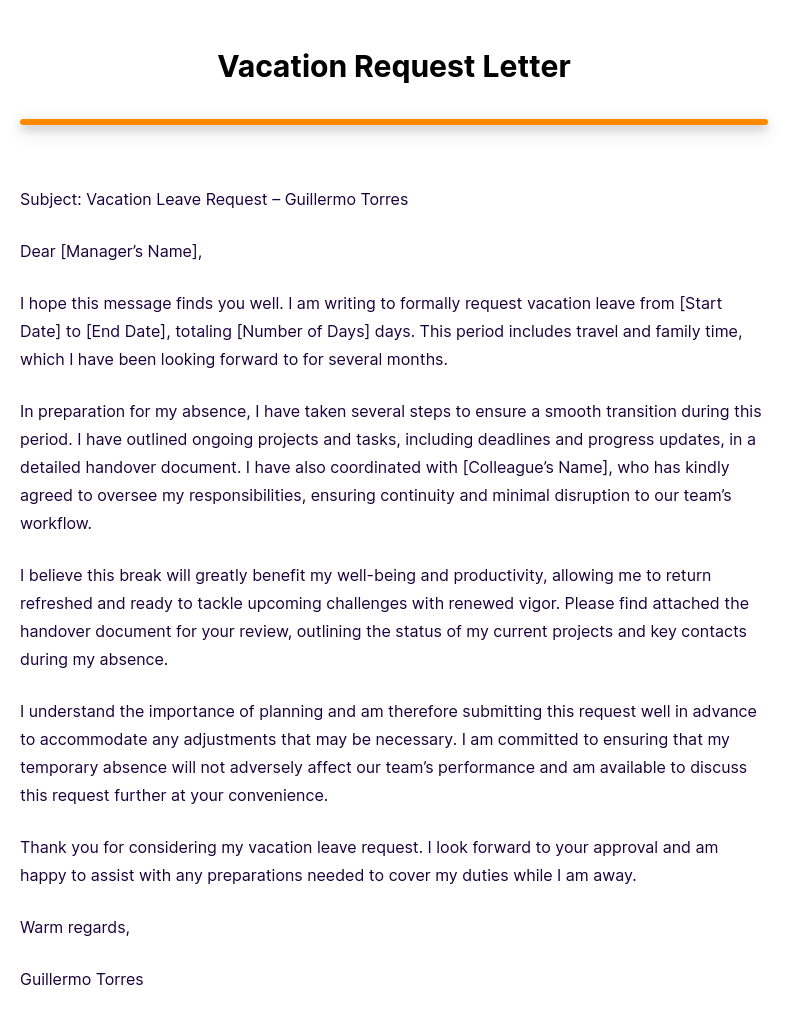Unlock the power of concise and persuasive argumentation with Two-Part (Claim + Reason) Thesis Statement Examples. This approach provides a dynamic framework for crafting compelling essays by presenting a claim followed by the reasoning behind it. Delve into how to effectively employ this method and uncover valuable tips to enhance your writing. Elevate your ability to articulate strong arguments and engage readers with well-structured, impactful thesis statements.
What is a Two-Part (Claim + Reason) Thesis Statement? – Definition
A Two-Part (Claim + Reason) Thesis Statement is a succinct and persuasive way to present an argument in academic writing. It consists of two essential components: the claim, which states the main point or position you’re asserting, and the reason, which provides a concise explanation or justification for why that claim is valid. This approach adds depth and clarity to your thesis statement, setting the stage for a well-structured and persuasive essay.
What is an example of a Two-Part (Claim + Reason) thesis statement?
Claim: “Mandatory physical education in schools is crucial.”
Reason: “Regular physical activity not only improves students’ physical health but also enhances their cognitive abilities, contributing to better academic performance.”
In this example, the claim is that mandatory physical education in schools is essential. The reason provided explains why this claim is valid, highlighting the positive impact of physical activity on both physical health and academic achievement. This two-part structure effectively outlines the argument and its rationale.
100 Two-Part (Claim + Reason) Thesis Statement Examples

Explore 100 Two-Part (Claim + Reason) Thesis Statement Examples, each carefully crafted to present compelling arguments along with their supporting rationales. This comprehensive collection spans various topics, allowing you to grasp the art of concise and impactful argumentation. Enhance your essay writing skills by learning how to effectively structure your ideas and convince your readers with well-reasoned claims.
- Claim: “Social media platforms have revolutionized communication.” Reason: “Their instant connectivity and vast user base facilitate global interactions, transforming how people connect and share information.”
- Claim: “Artificial intelligence is shaping the future of industries.” Reason: “Its ability to analyze massive data sets and automate complex tasks boosts efficiency and innovation across sectors.”
- Claim: “Climate change demands urgent attention and action.” Reason: “Mounting evidence of rising temperatures and extreme weather events underscores the critical need to mitigate environmental risks.”
- Claim: “Literature plays a pivotal role in fostering empathy.” Reason: “Engaging with diverse characters’ experiences cultivates understanding and compassion among readers.”
- Claim: “Diversity in the workplace enhances creativity and innovation.” Reason: “A range of perspectives fuels dynamic discussions and encourages fresh approaches to problem-solving.”
- Claim: “Higher education is a gateway to socioeconomic mobility.” Reason: “Access to advanced knowledge and skill development equips individuals to access better job opportunities.”
- Claim: “Government surveillance threatens individual privacy rights.” Reason: “Mass surveillance infringes on personal liberties and erodes the balance between security and freedom.”
- Claim: “Renewable energy sources are the solution to the climate crisis.” Reason: “Harnessing solar, wind, and hydro power reduces reliance on fossil fuels, curbing greenhouse gas emissions.”
- Claim: “Mandatory voting promotes a more engaged and informed citizenry.” Reason: “Compulsory participation ensures broader representation and encourages citizens to stay informed.”
- Claim: “Cultural diversity enriches a society’s social fabric.” Reason: “Different backgrounds and traditions contribute to a vibrant tapestry of experiences and perspectives.”
- Claim: “Online learning is revolutionizing education.” Reason: “Flexible schedules and interactive platforms enhance accessibility and engagement for learners worldwide.”
- Claim: “Gender equality is essential for societal progress.” Reason: “Empowering women in all spheres fosters innovation, economic growth, and social harmony.”
- Claim: “Space exploration drives technological advancements.” Reason: “The pursuit of cosmic knowledge inspires breakthroughs in engineering, materials science, and communication.”
- Claim: “Censorship of artistic expression hampers creative freedom.” Reason: “Limiting artistic freedom stifles cultural innovation and inhibits open dialogue on societal issues.”
- Claim: “Critical thinking is a crucial skill for modern education.” Reason: “Nurturing critical thinking abilities empowers students to analyze information, solve problems, and make informed decisions.”
- Claim: “Universal healthcare ensures equitable access to medical services.” Reason: “Healthcare for all reduces disparities, provides preventative care, and promotes overall well-being.”
- Claim: “The digital age has transformed the way we consume information.” Reason: “Instant access to online content and personalized algorithms reshape information consumption patterns.”
- Claim: “Financial literacy is essential for personal financial well-being.” Reason: “Understanding money management empowers individuals to make informed financial decisions.”
- Claim: “Technology addiction poses a significant societal concern.” Reason: “Excessive screen time impairs mental health, interpersonal relationships, and overall productivity.”
- Claim: “The preservation of natural habitats is crucial for biodiversity.” Reason: “Conserving ecosystems maintains species diversity and supports ecological balance.”
- Claim: “Ethical consumerism drives positive social and environmental change.” Reason: “Supporting eco-friendly and socially responsible products encourages responsible business practices.”
- Claim: “The advancement of robotics will redefine the job market.” Reason: “Automated tasks and AI technologies will reshape employment opportunities and skill requirements.”
- Claim: “Social media fosters both connection and isolation.” Reason: “Online interactions offer global connectivity, yet excessive screen time can lead to real-world disconnection.”
- Claim: “Youth involvement in civic activities cultivates active citizenship.” Reason: “Engaged young individuals contribute fresh perspectives and energize public discourse.”
- Claim: “Freedom of speech should have limitations to prevent hate speech.” Reason: “Balancing free expression with societal well-being safeguards marginalized communities and social harmony.”
- Claim: “Music therapy offers holistic healing for mental health.” Reason: “Engaging with music promotes emotional release, stress reduction, and cognitive improvement.”
- Claim: “Urbanization poses environmental challenges and opportunities.” Reason: “Concentrated urban living accelerates innovation and necessitates sustainable infrastructure solutions.”
- Claim: “Social inequality hinders economic growth and stability.” Reason: “Unequal distribution of resources stifles human potential and undermines social cohesion.”
- Claim: “The arts are essential for well-rounded education.” Reason: “Cultivating creative expression enhances critical thinking, communication, and empathy.”
- Claim: “Personalized learning empowers diverse student needs.” Reason: “Tailoring education to individual strengths fosters engagement and academic success.”
- Claim: “Ethical considerations should guide advancements in genetic engineering.” Reason: “Prioritizing ethical guidelines ensures responsible innovation and prevents unintended consequences.”
- Claim: “Effective communication is the cornerstone of successful relationships.” Reason: “Clear communication fosters mutual understanding, trust, and resolution of conflicts.”
- Claim: “Social media activism has transformed modern advocacy.” Reason: “Online platforms amplify voices, mobilize communities, and raise awareness about social issues.”
- Claim: “Multilingualism benefits cognitive development and cultural understanding.” Reason: “Learning multiple languages enhances brain function and promotes cross-cultural empathy.”
- Claim: “Early childhood education lays the foundation for lifelong learning.” Reason: “Quality early education nurtures cognitive, social, and emotional development.”
- Claim: “The gig economy provides flexible work options but lacks stability.” Reason: “Freelance opportunities offer autonomy, but inconsistent income poses financial challenges.”
- Claim: “Effective time management is key to academic success.” Reason: “Balancing priorities and deadlines enhances productivity and reduces stress.”
- Claim: “Alternative energy sources are vital for reducing carbon emissions.” Reason: “Transitioning from fossil fuels to renewables mitigates climate change and supports sustainability.”
- Claim: “Media literacy is essential in the digital age.” Reason: “Critical analysis of media sources promotes informed decision-making and safeguards against misinformation.”
- Claim: “Preserving indigenous languages safeguards cultural heritage.” Reason: “Language is intrinsic to identity, reflecting unique worldviews and historical legacies.”
- Claim: “Flexible work arrangements enhance work-life balance.” Reason: “Remote work and flexible hours accommodate personal needs, leading to improved well-being.”
- Claim: “Literacy is the foundation of lifelong learning and empowerment.” Reason: “Proficiency in reading and writing enables access to information, education, and opportunities.”
- Claim: “Rapid technological advancements pose ethical dilemmas in AI development.” Reason: “Ensuring AI aligns with human values and respects privacy is essential for responsible innovation.”
- Claim: “Universal basic income can address socioeconomic inequality.” Reason: “Providing a basic income cushion fosters economic security and reduces poverty.”
- Claim: “Cultural appropriation perpetuates stereotypes and erases history.” Reason: “Appropriating elements from marginalized cultures trivializes their significance and disregards their origins.”
- Claim: “Physical activity is crucial for overall health and mental well-being.” Reason: “Exercise releases endorphins, reduces stress, and improves cardiovascular health.”
- Claim: “Preserving biodiversity is essential for ecological balance.” Reason: “Each species contributes to ecosystem stability and resilience against environmental changes.”
- Claim: “Government transparency strengthens democracy and public trust.” Reason: “Open governance fosters accountability, ensures informed decisions, and curbs corruption.”
- Claim: “Critical reflection enhances personal growth and self-awareness.” Reason: “Examining experiences and beliefs promotes continuous learning and personal development.”
- Claim: “Technological advancements in healthcare improve patient outcomes.” Reason: “Innovations like telemedicine and precision medicine tailor treatments for better results.
- Claim: “Flexible work arrangements enhance work-life balance.” Reason: “Remote work and flexible hours accommodate personal needs, leading to improved well-being.”
- Claim: “Literacy is the foundation of lifelong learning and empowerment.” Reason: “Proficiency in reading and writing enables access to information, education, and opportunities.”
- Claim: “Rapid technological advancements pose ethical dilemmas in AI development.” Reason: “Ensuring AI aligns with human values and respects privacy is essential for responsible innovation.”
- Claim: “Universal basic income can address socioeconomic inequality.” Reason: “Providing a basic income cushion fosters economic security and reduces poverty.”
- Claim: “Cultural appropriation perpetuates stereotypes and erases history.” Reason: “Appropriating elements from marginalized cultures trivializes their significance and disregards their origins.”
- Claim: “Physical activity is crucial for overall health and mental well-being.” Reason: “Exercise releases endorphins, reduces stress, and improves cardiovascular health.”
- Claim: “Preserving biodiversity is essential for ecological balance.” Reason: “Each species contributes to ecosystem stability and resilience against environmental changes.”
- Claim: “Government transparency strengthens democracy and public trust.” Reason: “Open governance fosters accountability, ensures informed decisions, and curbs corruption.”
- Claim: “Critical reflection enhances personal growth and self-awareness.” Reason: “Examining experiences and beliefs promotes continuous learning and personal development.”
- Claim: “Technological advancements in healthcare improve patient outcomes.” Reason: “Innovations like telemedicine and precision medicine tailor treatments for better results.
- Claim: “Early childhood vaccinations are vital for public health.” Reason: “Immunizations prevent the spread of diseases, safeguarding individual and community well-being.”
- Claim: “Media plays a significant role in shaping public opinion.” Reason: “Information dissemination influences perspectives, leading to informed decisions and societal change.”
- Claim: “Globalization fosters cultural exchange and interconnectedness.” Reason: “Cross-cultural interactions promote understanding, collaboration, and shared values.”
- Claim: “Animal testing should be replaced with alternative research methods.” Reason: “Ethical considerations demand the use of cruelty-free testing methods that yield accurate results.”
- Claim: “Financial literacy education empowers responsible money management.” Reason: “Teaching budgeting and investment basics ensures informed financial decision-making.”
- Claim: “Promoting gender diversity in STEM fields drives innovation.” Reason: “Inclusive environments harness diverse perspectives, fostering creative problem-solving.”
- Claim: “Education empowers individuals to break the cycle of poverty.” Reason: “Access to quality education equips individuals with skills to overcome economic challenges.”
- Claim: “Cybersecurity measures are essential to protect digital assets.” Reason: “Preventing cyber threats safeguards personal information and prevents cybercrime.”
- Claim: “Economic growth should prioritize environmental sustainability.” Reason: “Balancing growth with conservation ensures future generations’ access to resources.”
- Claim: “Healthy eating habits contribute to overall well-being.” Reason: “Nutrient-rich diets support physical health, energy levels, and disease prevention.
- Claim: “Empathy is crucial for fostering harmonious interpersonal relationships.” Reason: “Understanding others’ perspectives cultivates compassion, reduces conflicts, and builds trust.”
- Claim: “Economic inequality hampers social mobility and undermines democracy.” Reason: “Unequal distribution of resources perpetuates disparities and limits equal opportunities.”
- Claim: “Online education offers accessible and flexible learning opportunities.” Reason: “Virtual learning platforms cater to diverse schedules and geographical constraints.”
- Claim: “Historical preservation maintains cultural heritage and identity.” Reason: “Preserving artifacts and landmarks ensures future generations connect with their past.”
- Claim: “Social entrepreneurship addresses societal challenges while generating profits.” Reason: “Innovative business models prioritize social impact, driving positive change and sustainability.”
- Claim: “Effective parenting strategies shape children’s emotional development.” Reason: “Nurturing emotional intelligence fosters resilience, empathy, and healthy relationships.”
- Claim: “Ethical fashion practices promote sustainable clothing production.” Reason: “Supporting ethically produced garments reduces environmental impact and supports fair labor practices.”
- Claim: “Inclusive education benefits students with diverse learning needs.” Reason: “Adapting curriculum and teaching methods empowers all students to thrive academically.”
- Claim: “Cultural preservation is integral to indigenous identity and rights.” Reason: “Preserving cultural traditions upholds sovereignty and protects indigenous ways of life.”
- Claim: “Volunteering enhances personal well-being and community resilience.” Reason: “Contributing time and skills fosters a sense of purpose and strengthens social ties.
- Claim: “A balanced work-life routine improves overall productivity and satisfaction.” Reason: “Prioritizing personal well-being and leisure time enhances focus and reduces burnout.”
- Claim: “Cultural diversity fosters innovation and global collaboration.” Reason: “Combining perspectives from different backgrounds sparks creative problem-solving and mutual understanding.”
- Claim: “Literacy rates correlate with socioeconomic development and empowerment.” Reason: “High literacy levels enhance access to education, employment opportunities, and civic engagement.”
- Claim: “Sustainable tourism preserves natural and cultural resources.” Reason: “Responsible travel practices protect fragile ecosystems and local traditions.”
- Claim: “Quality healthcare is a fundamental human right.” Reason: “Access to medical services promotes well-being and ensures equal opportunities for health.”
- Claim: “Community engagement enhances neighborhood safety and cohesion.” Reason: “Involved residents collectively address concerns and create a strong sense of belonging.”
- Claim: “Ethical considerations should guide AI’s role in decision-making.” Reason: “Responsible AI use prevents biased outcomes and respects human values.”
- Claim: “The arts promote emotional expression and healing.” Reason: “Creating and engaging with art facilitates catharsis and emotional release.”
- Claim: “Cultural sensitivity is vital for effective global communication.” Reason: “Understanding cultural nuances fosters mutual respect and minimizes misunderstandings.”
- Claim: “Social media’s impact on mental health warrants ethical guidelines.” Reason: “Balancing online engagement with mental well-being safeguards against digital stressors.
- Claim: “Economic globalization accelerates income inequality.” Reason: “Transnational corporations exploit cheap labor, exacerbating disparities between affluent and impoverished regions.”
- Claim: “Investing in early childhood education yields long-term societal benefits.” Reason: “Early learning programs enhance cognitive development and reduce future educational disparities.”
- Claim: “Active participation in local governance strengthens democracy.” Reason: “Engaging citizens in decision-making promotes accountability and responsive policies.”
- Claim: “Promoting mental health initiatives in schools benefits student well-being.” Reason: “Early support and awareness campaigns address psychological challenges and reduce stigma.”
- Claim: “Technology integration in education enhances student engagement.” Reason: “Interactive digital tools cater to diverse learning styles, encouraging active participation.”
- Claim: “Criminal justice reform is necessary for equitable legal outcomes.” Reason: “Eliminating biases in sentencing and addressing systemic flaws ensures fair justice.”
- Claim: “Sustainable agriculture practices are essential for food security.” Reason: “Regenerative farming methods preserve soil health and mitigate climate change impacts.”
- Claim: “Freedom of the press is integral to a functioning democracy.” Reason: “Unbiased journalism informs public discourse and holds authorities accountable.”
- Claim: “Intercultural education fosters global understanding and cooperation.” Reason: “Teaching cultural awareness cultivates empathy and prepares individuals for a diverse world.”
- Claim: “Inclusive urban planning improves accessibility and quality of life.” Reason: “Designing cities for all residents accommodates diverse needs and enhances urban livability.
With these 100 Two-Part (Claim + Reason) Thesis Statement examples, you have a diverse array of topics and arguments to explore, analyze, and incorporate into your essays.
Two-Part (Claim + Reason) Thesis Statement Examples for Essay
- Claim: “Exploring diverse cultures enriches personal growth.” Reason: “Cultural exposure broadens perspectives, fostering tolerance and empathy.”
- Claim: “Effective time management enhances academic success.” Reason: “Balancing study and leisure optimizes focus and reduces stress.”
- Claim: “Mindfulness practices improve mental well-being.” Reason: “Mindful techniques cultivate self-awareness, reducing anxiety and enhancing emotional balance.”
- Claim: “Literature is a powerful tool for social commentary.” Reason: “Fictional narratives offer insights into societal issues, prompting reflection and dialogue.”
- Claim: “Personalized learning caters to individual student needs.” Reason: “Tailoring education to learning styles boosts engagement and comprehension.”
- Claim: “Responsible social media usage preserves mental health.” Reason: “Setting boundaries online reduces comparison and fosters authentic connections.”
- Claim: “Community service fosters a sense of belonging.” Reason: “Volunteering connects individuals to their surroundings, enhancing civic engagement.”
- Claim: “Promoting eco-friendly habits protects the environment.” Reason: “Green choices like recycling and energy conservation reduce carbon footprint.”
- Claim: “Inclusive workplaces enhance employee morale.” Reason: “Valuing diversity creates a positive environment that promotes collaboration and creativity.”
- Claim: “Critical thinking skills are essential for informed decisions.” Reason: “Analytical thinking empowers individuals to evaluate information and make reasoned choices.”
Two-Part (Claim + Reason) Thesis Statement Examples for Argumentative Essay
- Claim: “Government surveillance infringes on individual privacy rights.” Reason: “Mass monitoring undermines civil liberties, opening doors to abuse of power.”
- Claim: “Social media platforms should implement stricter content moderation.” Reason: “Addressing harmful content reduces misinformation and protects user well-being.”
- Claim: “Mandatory voting promotes active citizenship and representative democracy.” Reason: “Compulsory participation ensures diverse voices are heard in political decisions.”
- Claim: “Gun control measures are necessary to prevent mass shootings.” Reason: “Stricter regulations reduce access to firearms, curbing potential violence.”
- Claim: “Access to quality healthcare is a fundamental human right.” Reason: “Affordable medical services ensure equitable well-being and protect lives.”
- Claim: “Climate change is a result of human activity.” Reason: “Scientific evidence links rising emissions to global temperature increases.”
- Claim: “Animal testing should be replaced with humane alternatives.” Reason: “Ethical considerations demand cruelty-free research methods that yield accurate results.”
- Claim: “Social media has negative effects on mental health.” Reason: “Excessive usage correlates with increased anxiety, depression, and social isolation.”
- Claim: “School dress codes infringe on students’ freedom of expression.” Reason: “Restrictive policies limit individuality and discourage self-confidence.”
- Claim: “Capital punishment should be abolished as it violates human rights.” Reason: “Irreversible consequences and the potential for wrongful convictions oppose ethical principles.”
Two-Part Thesis Statement Examples for Research Paper
- Claim: “AI-driven healthcare innovations enhance medical diagnostics.” Reason: “Machine learning algorithms analyze complex data, aiding accurate disease identification.”
- Claim: “Economic globalization impacts income distribution within nations.” Reason: “Global trade can lead to unequal wealth distribution among different socioeconomic groups.”
- Claim: “Gender pay gap persists despite progress in workplace equality.” Reason: “Societal norms and biases contribute to unequal compensation between genders.”
- Claim: “Urbanization affects mental health and well-being.” Reason: “City living can lead to increased stress levels due to noise and social pressures.”
- Claim: “Digital media’s influence on children’s development warrants scrutiny.” Reason: “Excessive screen time can hinder cognitive and social skills during formative years.”
- Claim: “Artificial intelligence has transformative potential in education.” Reason: “AI-powered personalized learning adapts to individual student needs, enhancing outcomes.”
- Claim: “Effects of climate change impact vulnerable populations disproportionately.” Reason: “Marginalized communities suffer more from environmental changes due to resource disparities.”
- Claim: “The role of genetics in mental disorders requires further exploration.” Reason: “Genetic factors contribute to mental health conditions, prompting research for targeted treatments.”
- Claim: “Criminal justice reform is needed to address racial disparities.” Reason: “Biased sentencing and profiling lead to unequal treatment within the justice system.”
- Claim: “Ethical implications of gene editing demand regulatory frameworks.” Reason: “CRISPR technology raises concerns about unintended consequences and responsible usage.”
Can you have a two point thesis?
Yes, you can have a two-point thesis, also known as a Two-Part Thesis Statement. This type of thesis statement presents two distinct aspects or ideas that will be discussed in your essay, each supported by specific reasons or evidence. It provides a clear structure for organizing your arguments and helps you convey a well-rounded perspective on your topic.
How to Write a Two Part Thesis Statement? – Step by Step Guide
Crafting a Two-Part Thesis Statement involves careful consideration of your topic and the main points you want to address. Here’s a step-by-step guide to help you create an effective Two-Part Thesis Statement:
- Choose a Specific Topic: Select a topic for your essay that is focused and manageable. Your thesis statement should address a specific aspect of the topic.
- Identify Two Key Points: Determine the two main points or arguments you want to make about the topic. These points should be distinct and complementary, contributing to a comprehensive understanding of the subject.
- Create a Claim for Each Point: Develop a clear and concise claim for each of the two points. These claims should represent the main ideas you will be discussing in your essay.
- Provide Reasons or Evidence: For each claim, outline the reasons or evidence that support your point. These reasons will help you elaborate on each point in your essay.
- Arrange the Structure: Organize your Two-Part Thesis Statement by presenting both claims in a logical order. You can choose to present one claim before the other or arrange them based on their significance.
- Concise Language: Write your Two-Part Thesis Statement in clear and concise language. Avoid unnecessary jargon or complex sentence structures.
- Revise and Refine: Review your Two-Part Thesis Statement for clarity and coherence. Make sure that each part is distinct and contributes to the overall argument.
- Alignment with Essay Content: Ensure that the points you’ve identified in your Two-Part Thesis Statement are directly related to the content of your essay. This alignment helps maintain a focused and organized essay.
How do you split a thesis statement?
Splitting a thesis statement refers to breaking it down into two distinct parts: the claim and the reason. The claim represents the main idea or argument you are making, while the reason provides a brief explanation or justification for that claim. Here’s how you can split a thesis statement:
Original Thesis Statement: “Online education is beneficial.”
Split Thesis Statement:
- Claim: “Online education offers numerous benefits.”
- Reason: “It provides flexible scheduling and access to a variety of courses.”
By splitting the thesis statement, you clearly separate the main claim from the reason that supports it. This structure sets the foundation for a Two-Part Thesis Statement.
Tips for Writing a Two Part Thesis Statement
- Be Clear and Specific: Ensure that your claims and reasons are clear, specific, and focused on the main points you want to discuss.
- Balance the Two Points: Choose two points that are relevant to your topic and provide a well-rounded perspective on the subject.
- Logical Order: Present your claims in a logical order that flows well and contributes to the coherence of your essay.
- Support with Evidence: Make sure you have enough evidence or reasoning to support each claim. This strengthens the credibility of your arguments.
- Avoid Overcomplication: Keep your language simple and straightforward. Avoid overly complex sentence structures that might confuse the reader.
- Consider Counterarguments: Anticipate potential counterarguments to your claims and address them in your essay to strengthen your position.
- Stay Focused: Each part of your thesis statement should relate directly to the points you’ll discuss in your essay. Avoid including unnecessary information.
- Revise and Edit: Like any other part of your essay, revise and edit your Two-Part Thesis Statement to ensure it effectively conveys your intended message.
A well-crafted Two-Part Thesis Statement guides your essay’s structure, helps you stay focused on your main points, and provides your readers with a clear roadmap of what to expect.








